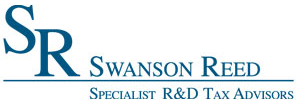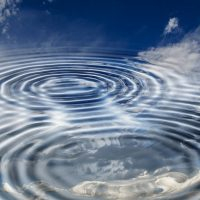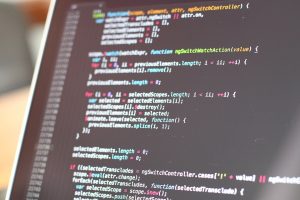Rhode Island Patent of the Month – May 2025
Flux Marine Ltd. has secured U.S. Patent No. 12296934 for a groundbreaking marine propulsion system that promises to redefine electric boating. The patent, titled ‘Dual strut power [...]
Maritime and Boating Case Study
Business Scenario
This case study exemplifies the application of key legislative requirements for eligible R&D activities as they apply to relevant activities in the maritime and boating industry.
Carter Marine Group (CMG) specializes in marine infrastructure projects. In 2013, the company was approached by a client to create a permanent wharf in a high traffic import and export area.
CMG conducted R&D work to fulfill its client’s request with the main business objective being to design and develop a permanent wharf to assist in the importing and exporting of products in the oil and gas industry.
To qualify for the Research and Experimentation Tax Credit, CMG had to make sure its “qualified research” met four main criteria, known and developed by Congress as The Four-Part Test. After self-assessing, CMG declared the following experiments as R&D work.
CMG’s Eligible R&D Activities
Design and development of a series of prototypes to achieve the technical objectives (design of the permanent wharf).
The hypothesis for this activity stated that CMG could design a permanent wharf in a high traffic area to support imports/exports of the oil and gas industry.
After conducting theoretical design experiments, CMG concluded that such a design was feasible, but needed to be prototyped and fully tested to prove the hypothesis.
Trials and analysis of data to achieve results that can be reproduced to a satisfactory standard (prototype development and testing of the permanent wharf).
The hypothesis for this phase of the R&D experiment was that CMG could develop and test the wharf design to prove that it could be permanently installed to help the organization achieve its project objectives.
CMG concluded that the theoretical conclusions from the design phase could be realized through prototype development and related tests. CMG stated that the new knowledge generated would be used for further iterations of design and development and further field testing.
Background research to evaluate current knowledge gaps and determine feasibility (background research for permanent wharf).
CMG conducted the following R&D activities during this phase of its project:
- Literature search and review
- Initial discussions with marine engineers to discuss the feasibility of the project
- Review of existing drawings
- Consultation with industry professionals and potential customers to determine the level of interest and commercial feasibility of such a project
- Preliminary equipment and resources review with respect to capacity, performance and suitability for the project
- Consultation with key component/part/assembly suppliers to determine the factors they considered important in the design and to gain an understanding of how the design needed to be structured accordingly
The activities conducted during the background research were necessary because they assisted in identifying the key elements of the research project, therefore qualifying as R&D work.
Ongoing analysis of customer or user feedback to improve the prototype design (feedback R&D of the permanent wharf).
CMG’s eligible R&D activities for this phase of the project included:
- Ongoing analysis and testing to improve the efficiency and safety of the project.
- Ongoing development and modification to interpret the experimental results and draw conclusions that served as starting points for the development of new hypotheses.
- Commercial analysis and functionality review.
These activities were necessary to evaluate the performance capabilities of the new design in the field and to improve any flaws in the design.
Live Webinar: The R&D Tax Credit in the Transportation Industry
Duration: 60 Minutes
Learning objectives include:
- An overview of R&D Tax Credits
- Identify Qualifying Research Activities
- Define the 4-Part Test
- How to substantiate activities through documentation
- Identify Qualifying Research Expenses
Cost: FREE
CE/CPE credits: Worth one hour
Knowledge Level: Basic*
Field of Study: Taxation
Qualified Research Defined
Qualified research consists of research for the intent of developing new or improved business components. A business component is defined as any product, process, technique, invention, formula, or computer software that the taxpayer intends to hold for sale, lease, license, or actual use in the taxpayer’s trade or business.
The Four-Part Test
Activities that are eligible for the R&D Credit are described in the “Four-Part Test” which must be met for the activity to qualify as R&D.
- Permitted Purpose: The purpose of the activity or project must be to create new (or improve existing) functionality, performance, reliability, or quality of a business component.
- Elimination of Uncertainty: The taxpayer must intend to discover information that would eliminate uncertainty concerning the development or improvement of the business component. Uncertainty exists if the information available to the taxpayer does not establish the capability of development or improvement, method of development or improvement, or the appropriateness of the business component’s design.
- Process of Experimentation: The taxpayer must undergo a systematic process designed to evaluate one or more alternatives to achieve a result where the capability or the method of achieving that result, or the appropriate design of that result, is uncertain at the beginning of the taxpayer’s research activities.
- Technological in Nature: The process of experimentation used to discover information must fundamentally rely on principles of hard science such as physical or biological sciences, chemistry, engineering or computer science.
What records and specific documentation did CMG keep?
Similar to any tax credit or deduction, CMG had to save business records that outlined what it did in its R&D activities, including experimental activities and documents to prove that the work took place in a systematic manner.
CMG saved the following documentation:
- Literature review
- Project plans
- Photographs
- Progress reports
- Test results and analysis
- Customer feedback
- Field-test results
By having these records on file, CMG confirmed that it was “compliance ready” — meaning if it was audited by the IRS, it could present documentation to show the progression of its R&D work, ultimately proving its R&D eligibility.




































